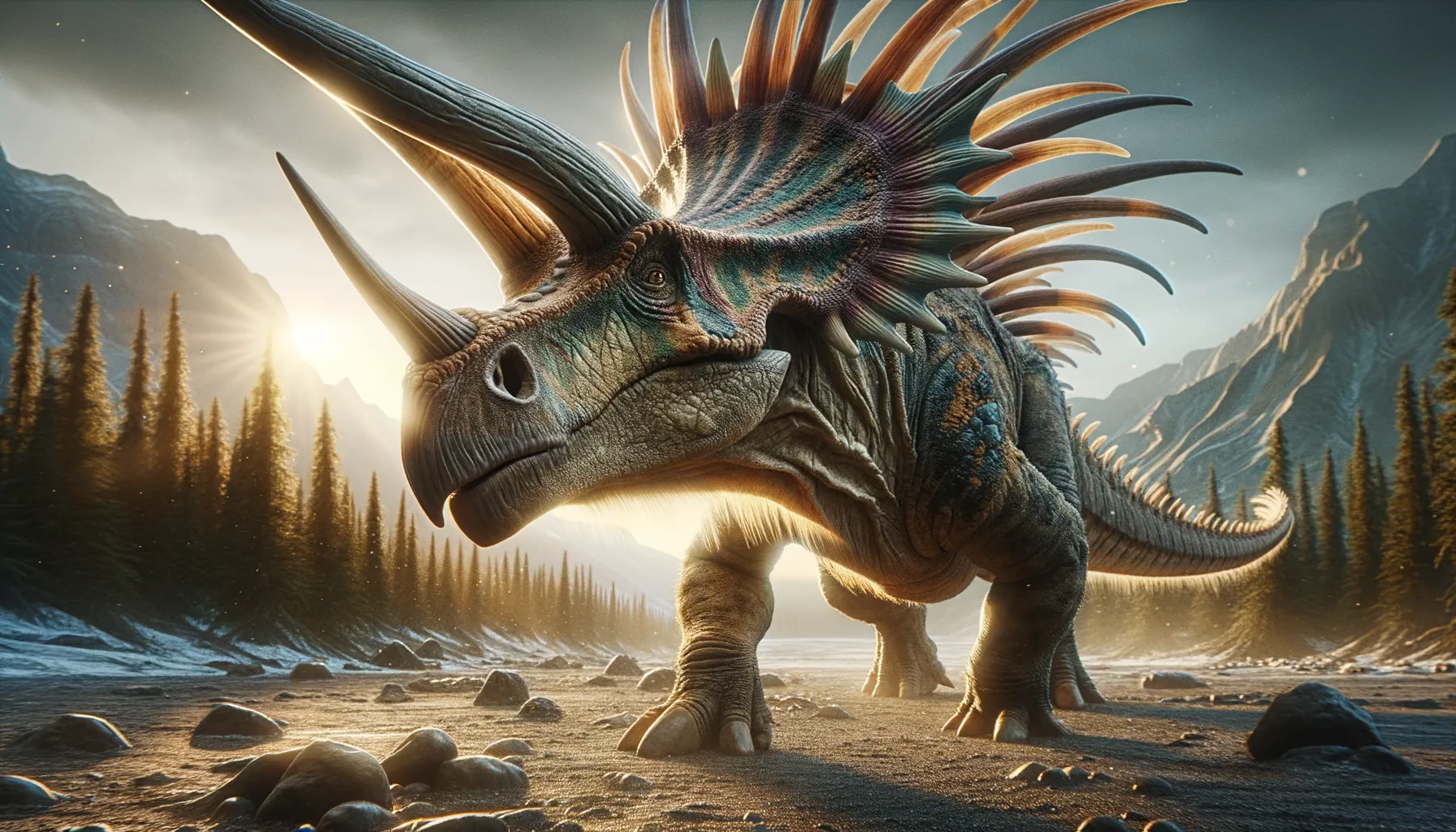
Styracosaurus
Horned power from a prehistoric world!
Period
Cretaceous
Length
About 18 feet long.
Height
Around 6 feet tall at the shoulders.
Weight
Approximately 3 tons.
Styracosaurus, a member of the ceratopsian family, is easily recognized by its impressive array of horns and frills. This dinosaur roamed the Earth during the Cretaceous period, known for its herbivorous diet and social behavior. Its striking features, including a long nose horn and a spiky frill, made it an intriguing subject for researchers and dinosaur enthusiasts alike.
Diet
Styracosaurus was a herbivore, feeding primarily on low-lying plants. It had a beak-like mouth suited for cropping vegetation, making it a skilled grazer of ancient ferns and cycads.
Hunting
As a herbivore, Styracosaurus did not hunt but grazed in groups. These dinosaurs likely used their horns primarily for defense against predators rather than for hunting.
Environmental challenges
Styracosaurus faced environmental challenges such as climatic changes that affected its food sources. Large predators such as tyrannosaurs posed threats that required defensive measures. Additionally, competition for resources with other herbivores might have been significant during its era.
Speed
Relatively slow, likely moving at around 5 to 10 mph.
Lifespan
Estimated to be around 30 years.
First discovery
First discovered in Alberta, Canada in 1913.
Fun Facts
- Styracosaurus had an impressive array of horns on its head, with a large horn on its nose and several others on its frill.
- This dinosaur lived during the Late Cretaceous period, about 75 million years ago.
- Styracosaurus is known for its spectacular frill, which scientists believe could have been used for protection or to attract mates.
- Styracosaurus was a herbivore, meaning it ate plants, and likely fed on low-growing vegetation like ferns.
- The name 'Styracosaurus' means 'spiked lizard', referring to its distinctive frill.
- Despite its fearsome appearance, Styracosaurus probably used its horns more for display and social interactions than for fighting predators.
- Fossils of Styracosaurus have been primarily discovered in what is now Alberta, Canada.
Growth and Development
Styracosaurus was likely to start life as a small hatchling, growing rapidly in its first few years. As it developed, its distinctive horn and frill features became more pronounced. The growth of these features was crucial for social interactions and defense.
Habitat
Styracosaurus inhabited lush, subtropical regions with abundant vegetation. It thrived in areas with access to water sources like rivers and lakes. These environments provided the necessary resources for its survival and reproduction.
Interaction with other species
Styracosaurus likely lived in herds, fostering a sense of community amongst its kind. Its interactions with predators would have centered around defense mechanisms using its sharp horns. Symbiotic relationships might have existed with other herbivores in the region.
Natural lifespan
Styracosaurus could live naturally up to around 30 years.
Reproduction
Styracosaurus likely laid eggs, with females creating nests for laying and protecting them. Parental care might have involved guarding the nest from predators or maintaining an optimal temperature for incubation.
Social behaviour
Styracosaurus might have exhibited social behavior, living and moving in herds. These groups could have been formed for protection, foraging efficiency, or social interactions that helped survival. Communication within the herd could have involved visual displays or vocalizations.
Fossil locations
Fossil remains of Styracosaurus have predominantly been found in Alberta, Canada. These discoveries are primarily concentrated in the Dinosaur Provincial Park, a rich site for Cretaceous period fossils. Such locations provide valuable insights into the environmental conditions and lifestyle of this dinosaur.
